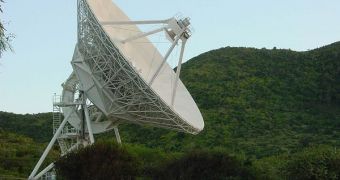Between Wednesday, November 18, and Thursday, November 19, more than 35 radio telescopes around the world will take part in the largest effort ever of creating a sky grid. This system of reference will allow astronomers to better detect the position of various celestial objects, relative to the position of the Earth. More than 243 distant quasars will be analyzed during this investigation, which also includes the US National Science Foundation's (NSF) Very Long Baseline Array (VLBA) observatory. All the telescopes in the study will be linked together through interferometry.
Quasars are hyperactive galaxies, which contain supermassive black holes at their core. This makes them clearly visible in radio wavelengths, which is one of the main reasons why the research was not, for example, conducted in visible light. The structures are very far away from the Earth, which means that, even though they are moving, they appear to be completely still on the night sky. This is a very useful feature for the future map that the 35 telescopes will create, which requires a few stable “landmarks,” to be taken as reference points.
Observatories from Asia, Australia, Europe, North America, South America, Antarctica, and the Pacific region will participate in the survey, which is scheduled to last for 24 hours. The project is more ambitious than any other before it. The largest number of radio telescopes used until now was of 23, whereas 35 will be used in tomorrow's endeavor. The International Astronomical Union (IAU) states that 295 quasars need to be taken as reference points for the new sky grid. Because, even with 35 observatories, gaps still remain in the sky, only 243 will be observed in tomorrow's study, with the others left to be analyzed at a later date.
The VLBA is a continent-wide radio telescope system with ten 240-ton dish antennas ranging from Hawaii to the Virgin Islands. Operated from the National Radio Astronomy Observatory's (NRAO) Pete V. Domenici Science Operations Center, in Socorro, New Mexico, the VLBA offers the greatest resolving power, or ability to see fine details, as opposed to any other telescopes in the world. With its help, astronomers may soon be able to measure the speed and directions of objects moving through the sky with an increased accuracy.

 14 DAY TRIAL //
14 DAY TRIAL //